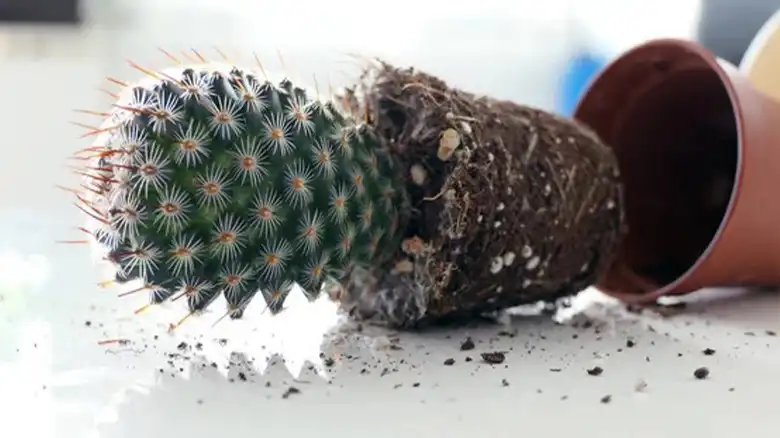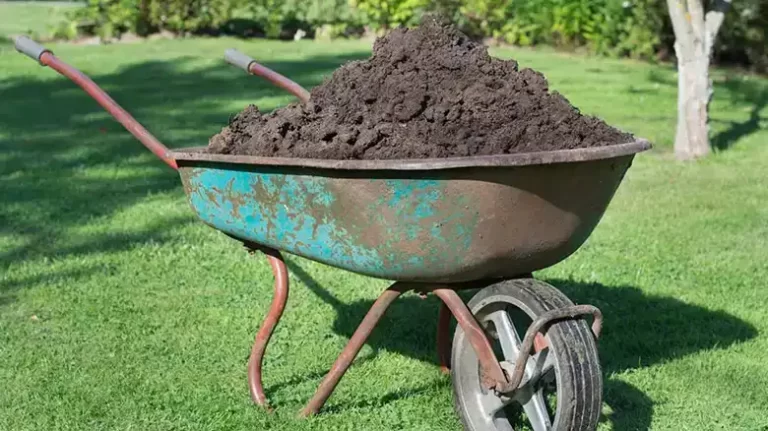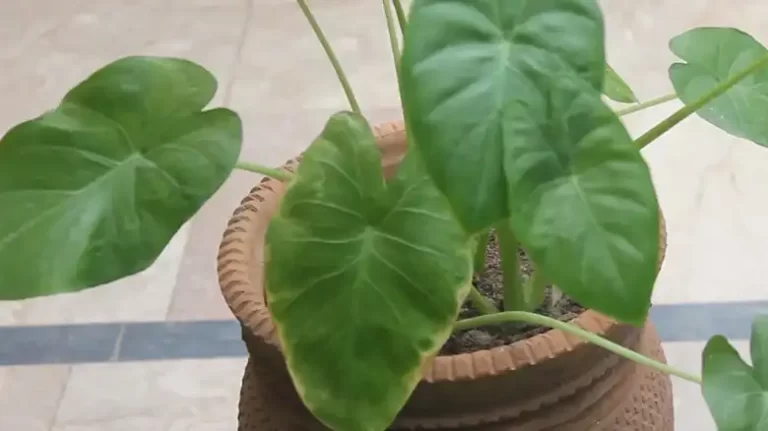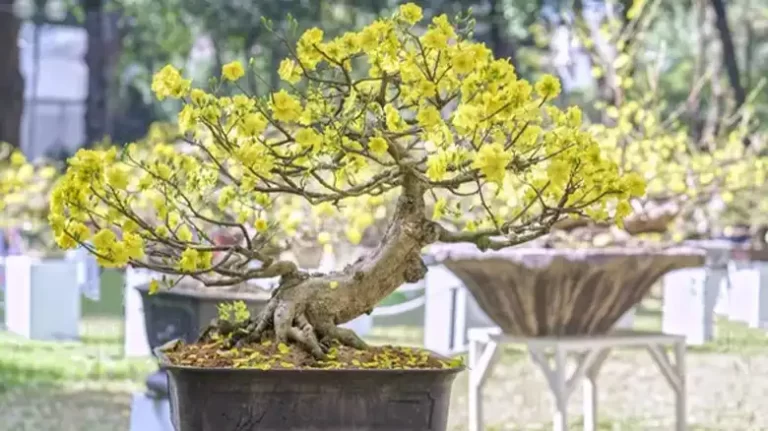What to Do When Cactus Fall Over
Cacti, those resilient and often iconic desert plants, can sometimes take a tumble. But fear not, for this article will guide you through the process of rescuing and reviving your fallen cactus.
From understanding why cacti fall over to mastering proper repotting techniques, we’ll cover everything you need to know to ensure your cactus stands tall and thrives.

Why Cactus Fall Over
Cacti, those prickly and enduring desert dwellers, may appear indestructible, but they too can take a tumble. Understanding the reasons behind a fallen cactus is the first step in nursing it back to health.
1. Overwatering
Cacti might hail from arid environments, but they have their limits when it comes to water. Overzealous watering can lead to root rot, weakening their grip in the soil.
2. Top-Heavy Growth
As cacti reach for the sky, their upper portions can become disproportionately heavy. This imbalance can eventually cause them to lose their footing.
3. Pests and Diseases
Invasive pests or diseases can silently gnaw away at a cactus’s strength, making it more prone to falling over. Vigilance is key to early detection and intervention.
4. Environmental Stress
Cacti thrive under specific conditions, and any deviation from their preferred environment can stress them out. Too much or too little sunlight, extreme temperatures, or unsuitable soil can weaken their structure over time.
Rescuing Your Fallen Cactus
Cacti, those sturdy desert denizens, can sometimes find themselves leaning or even lying flat. If your beloved cactus has taken a tumble, fret not; there’s hope to bring it back to its upright glory. In this section, we will explore the essential steps to rescue your fallen cactus and nurse it back to health.
Assess the Damage
Before you embark on the rescue mission, take a close look at your fallen cactus. Assessing the damage is crucial in determining the best course of action.
Check for Root Damage: Gently examine the roots. If they appear mushy, brown, or rotten, you’ve got root issues to contend with.
Inspect for Stem Damage: Examine the stem for any breaks, wounds, or signs of disease. Damaged stems can hinder recovery.
Evaluate Overall Health: Consider the overall health of the cactus. Is it still firm and plump, or has it become shriveled and soft?
Prepare Your Tools
Gathering the necessary tools and materials is the first step towards rescuing your fallen cactus. Here’s what you’ll need:
Gloves: Sturdy gardening gloves protect your hands from spines and potential irritants.
Pruning Shears: Sharp and clean pruning shears are essential for cutting away damaged parts.
Container and Potting Mix: Choose an appropriate-sized container and cactus-specific potting mix for repotting.
Supports: Depending on your cactus’s size, you may need stakes or supports to keep it upright.
Remove the Cactus Carefully
Once you’re geared up, gently remove the cactus from its pot or garden bed. Take your time to avoid causing further harm to the plant. If the cactus is large or heavy, consider enlisting some help.
Trim Damaged Parts
With the cactus safely out of its pot, it’s time to trim away the damaged portions. Use your pruning shears to make clean cuts, removing any rotting roots or damaged stems. This step helps prevent further issues and allows for new growth.
Let It Dry
After trimming, place your cactus in a dry, shaded area. Allowing it to air dry for a few days is crucial for preventing infections when repotting. The exposed ends need time to callus, forming a protective layer.
Choose the Right Container
Select a new container or pot that’s just a bit larger than the cactus’s root ball. It’s essential to provide enough room for growth without overwhelming the plant.
Repot with Care
Fill the new container with cactus-specific potting mix, leaving enough space for the cactus. Place your cactus in the center and gently pack the soil around it. Ensure the cactus stands upright and stable.
Support and Water Sparingly
If your cactus is still a bit wobbly, use stakes or supports to keep it steady. Be careful not to damage the cactus while securing it. Water sparingly after repotting, allowing the soil to dry out between waterings.
Monitor Progress
The road to recovery for your fallen cactus may take some time. Place it in an environment with appropriate lighting and temperature conditions. Keep a watchful eye for signs of improvement or any potential setbacks.
Patience Is Key
Remember, rescuing a fallen cactus requires patience and care. Don’t rush the process, and resist the urge to overwater or over-fertilize. With the right attention and a little time, your cactus can stand tall once more, thriving in its pot or garden bed.
Proper Repotting Techniques
Repotting a cactus may seem like a straightforward task, but it requires some careful steps to ensure your cactus stays healthy and thrives. Here, we’ll delve into the proper techniques for repotting your cactus, from choosing the right pot to handling the process with care.
Selecting the Right Pot
When it comes to repotting your cactus, choosing the appropriate pot size is crucial. Here’s how to do it:
1. Size Matters: Opt for a pot that’s just slightly larger than the current one. A pot that’s 1-2 inches wider in diameter should suffice.
2. Depth Consideration: Ensure the new pot has adequate depth to accommodate the cactus’s root system comfortably. The roots should fit without being cramped.
3. Drainage is Key: Look for a pot with drainage holes at the bottom to prevent water from pooling, which can lead to root rot.
Choosing the Right Soil Mix
The type of soil you use plays a significant role in your cactus’s overall health. Here’s what you need to know:
1. Well-Draining Mix: Cacti thrive in well-draining soil. Use a specialized cactus or succulent mix, or create your own by mixing potting soil with perlite or sand.
2. Avoid Excess Moisture: Ensure the soil doesn’t hold excess moisture, as this can lead to root issues. A proper mix allows water to pass through quickly.
3. pH Level: Aim for a slightly acidic to neutral pH range (around 6.0 to 7.0) to provide an ideal environment for your cactus.
Correct Positioning Within the Pot
Placing your cactus correctly within the pot can make a significant difference in its growth and stability:
1. Centered and Upright: Position the cactus in the center of the pot, ensuring it stands upright. Avoid burying it too deeply or exposing too much of the stem.
2. Avoid Crowding: Leave some space around the cactus to accommodate growth. Overcrowding can lead to competition for resources.
3. Gently Tamp Down Soil: After placing the cactus, gently press down on the soil to secure it in place. This helps eliminate air pockets and provides stability.
Watering and Settling the Cactus
Once your cactus is comfortably settled into its new home, you’ll need to water it appropriately:
1. Initial Watering: Give your cactus a gentle drink of water after repotting to help it settle. Ensure the soil is evenly moist but not waterlogged.
2. Allow Drying: Let the soil dry out between waterings. The frequency will depend on factors like the cactus species, pot size, and environmental conditions.
3. Be Cautious: Avoid overwatering during the initial recovery period. Cacti are more tolerant of underwatering than overwatering.
Providing Adequate Support
When your cactus takes a spill and ends up sprawled on its side, it’s crucial to provide the right support for it to stand tall once again. In this section, we’ll explore the essential steps and methods to give your fallen cactus the stability it needs to thrive.
Assessing the Damage
Before you can offer support, it’s vital to assess the extent of the damage your cactus has incurred during its fall.
Checking for Bent or Broken Stems
Inspect the cactus for any bent or broken stems. These can be gently realigned if not severely damaged.
Evaluating the Root System
Examine the root system to ensure it hasn’t suffered extensive damage. If the roots are intact and healthy, your cactus has a better chance of recovery.
Choosing the Right Support
The type of support you provide will depend on the size and species of your cactus. Here are some options to consider:
Stakes and Supports
For tall or top-heavy cacti, stakes or supports can help maintain their upright position. These supports should be tall enough to reach the cactus’s height without causing any harm.
Twine or Soft Ties
Gently tie the cactus to its support using soft twine or plant-friendly ties. Ensure that they are not too tight, as you don’t want to damage the cactus’s delicate stems.
Rocks or Bricks
In some cases, strategically placed rocks or bricks around the base of the cactus can offer stability, especially if the cactus is still in the ground.
Positioning the Support
Proper positioning of the support is crucial to ensure your cactus regains its balance.
Centering the Cactus
Place the support close to the base of the cactus and ensure that it is centered. This will help distribute the weight evenly and prevent any further leaning.
Adjusting as Needed
As your cactus starts to recover and grow vertically, you may need to adjust the support to accommodate its changing shape and size.
Monitoring Progress
Once you’ve provided the necessary support, it’s essential to monitor your cactus’s progress closely.
Regular Inspections
Regularly check the cactus for any signs of improvement or any issues that may require adjustments to the support.
Growth Tracking
Track the cactus’s growth to ensure it’s on the right path to recovery. New growth and an upright stance are positive indicators.
Patience and Persistence
Supporting a fallen cactus is not a quick fix. It requires patience and persistence as the cactus gradually recovers.
Avoiding Overcorrection
Resist the urge to overcorrect the cactus’s position too quickly. Gradual adjustments are less likely to stress the plant.
Providing Long-Term Support
Some cacti may require support for an extended period, especially if they were severely damaged during the fall.
Monitoring and Care Maintenance
Cacti, though resilient, demand consistent care and vigilance, especially after a fall. Regular monitoring and proper maintenance are pivotal to ensure your cactus not only recovers but flourishes in the long run.
Observing Signs of Stress
Begin by closely observing your fallen cactus for any signs of stress. Look for discoloration, wilting, or changes in overall appearance. Stress indicators can guide you in adjusting your care routine accordingly.
Consistent Watering Practices
Maintain a disciplined watering schedule. Cacti thrive in well-draining soil, and overwatering is a common pitfall. Allow the soil to dry out between watering sessions to prevent root rot and ensure the overall health of your cactus.
Fertilization for Recovery
Consider supplementing your cactus’s recovery with appropriate fertilization. Opt for a balanced, diluted cactus fertilizer during the growing season. However, exercise caution to avoid over-fertilizing, which can lead to its own set of issues.
Adjusting Light Exposure
Evaluate the light conditions your cactus is exposed to. Ensure it receives adequate sunlight, as cacti are accustomed to bright, indirect light. However, sudden exposure to intense sunlight may cause stress, so make adjustments gradually.
Temperature Considerations
Cacti are hardy, but extreme temperatures can be detrimental. Protect your cactus from sudden temperature fluctuations, especially during winter. Consider moving it to a sheltered location if temperatures drop significantly.
Pruning and Shaping
Regularly inspect your cactus for any dead or damaged parts. Pruning away unhealthy sections encourages new growth and prevents the spread of diseases. Shaping your cactus also aids in maintaining an aesthetically pleasing form.
Pest and Disease Vigilance
Stay vigilant against potential pests and diseases. Regularly inspect your cactus for any unusual spots, discolorations, or pests. Early detection allows for prompt intervention and prevents further stress on the plant.
Seasonal Adjustments
Recognize the cyclical nature of cacti. Adjust your care routine according to the seasons. During the dormant winter months, reduce watering frequency and refrain from fertilizing to respect the natural growth patterns of your cactus.
Rotational Positioning
Promote even growth by periodically rotating your cactus. This ensures all sides receive equal sunlight, preventing the development of a lopsided or imbalanced structure.
Documenting Changes
Maintain a simple journal or take photographs regularly to document the changes in your cactus. Not only does this help you track its progress, but it also provides valuable insights into its response to various care practices.
Seeking Professional Advice
In complex cases or if you notice persistent issues, consider seeking advice from a professional. A horticulturist or a local plant expert can offer tailored guidance based on your specific cactus species and environmental conditions.
Frequently Asked Questions
Q1: Why do cacti fall over?
A1: Cacti can fall over due to several reasons, including overwatering, top-heavy growth, pests, diseases, and environmental stress. Understanding the specific cause can help you take appropriate action to prevent future falls.
Q2: Can a fallen cactus be saved?
A2: Yes, most fallen cacti can be saved with the right care and attention. It’s crucial to address the root cause of the fall, trim damaged parts, repot if necessary, and provide adequate support to help the cactus recover.
Q3: How do I know if my cactus has root rot?
A3: Signs of root rot in cacti include yellowing or browning of stems, a foul odor, and mushy or discolored roots. If you suspect root rot, carefully inspect the roots, trim away affected areas, and repot in well-draining soil.
Q4: When should I water my cactus after it falls over?
A4: After a cactus has fallen over, it’s essential to let the soil dry out before watering again. Water sparingly and only when the soil is completely dry to avoid exacerbating any root issues.
Q5: How can I provide support to a fallen cactus?
A5: You can provide support to a fallen cactus by using stakes, twine, or plant-friendly ties. Gently tie the cactus to the support structure to help it stand upright until it regains stability.
Q6: Is it necessary to repot a fallen cactus?
A6: Repotting is often necessary if the cactus has outgrown its current container or if its roots are damaged. Choose a slightly larger pot with well-draining soil to promote healthy growth.
Q7: What type of soil mix is best for cacti?
A7: Cacti thrive in well-draining soil mixes designed for succulents or cacti. These mixes typically provide the right balance of moisture retention and drainage to keep your cactus healthy.
Conclusion
Rescuing a fallen cactus requires patience, care, and attention to detail. By understanding the reasons behind cactus falls, mastering repotting techniques, providing proper support, and maintaining vigilant care, you can revive your cactus and ensure it thrives once more.
Remember, a little effort can go a long way in helping your cactus stand tall and healthy.





